Summer vacay means more time to experiment in the kitchen. Why not rustle up unique chutneys sourced from home chefs?
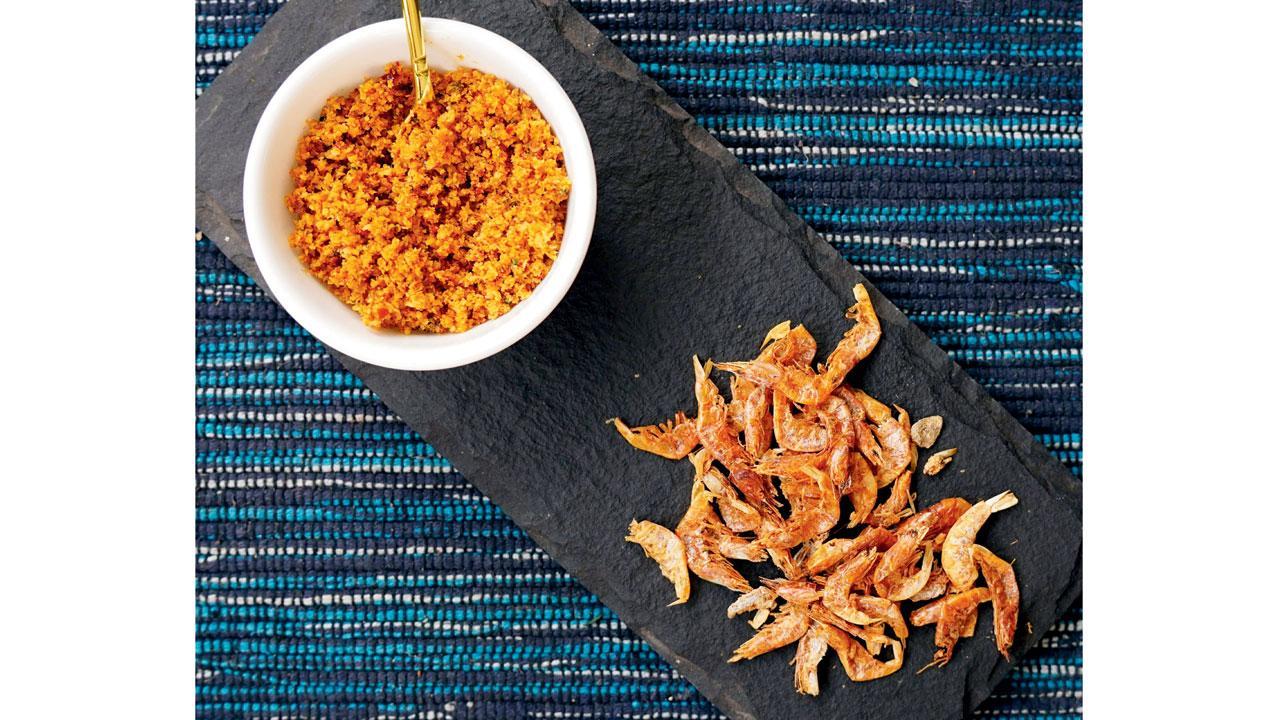
Bandra-based Chef Sarah Jacob Nair has roots in Kerala where non-vegetarian and seafood chutneys are quite popular. Prawn chammanthi is a lunchtime favourite. Pics/Aishwarya Deodhar
A survey conducted by food delivery platform Swiggy shows that they delivered 33 million idlis in the past year. That’s quite something, but the only thing that makes the otherwise bland idli edible, for this writer at least, is the accompanying chutney. The South Indian eateries in Matunga, omnipresent Udupi restaurants across the metropolis, and our roadside idli-vada stalls have introduced us only to the classic white coconut chutney and the red tomato-garlic chutney. Occasionally, someone throws in the green variant. Our tryst with South Indian chutneys doesn’t even scratch the surface of the world of this condiment.
ADVERTISEMENT
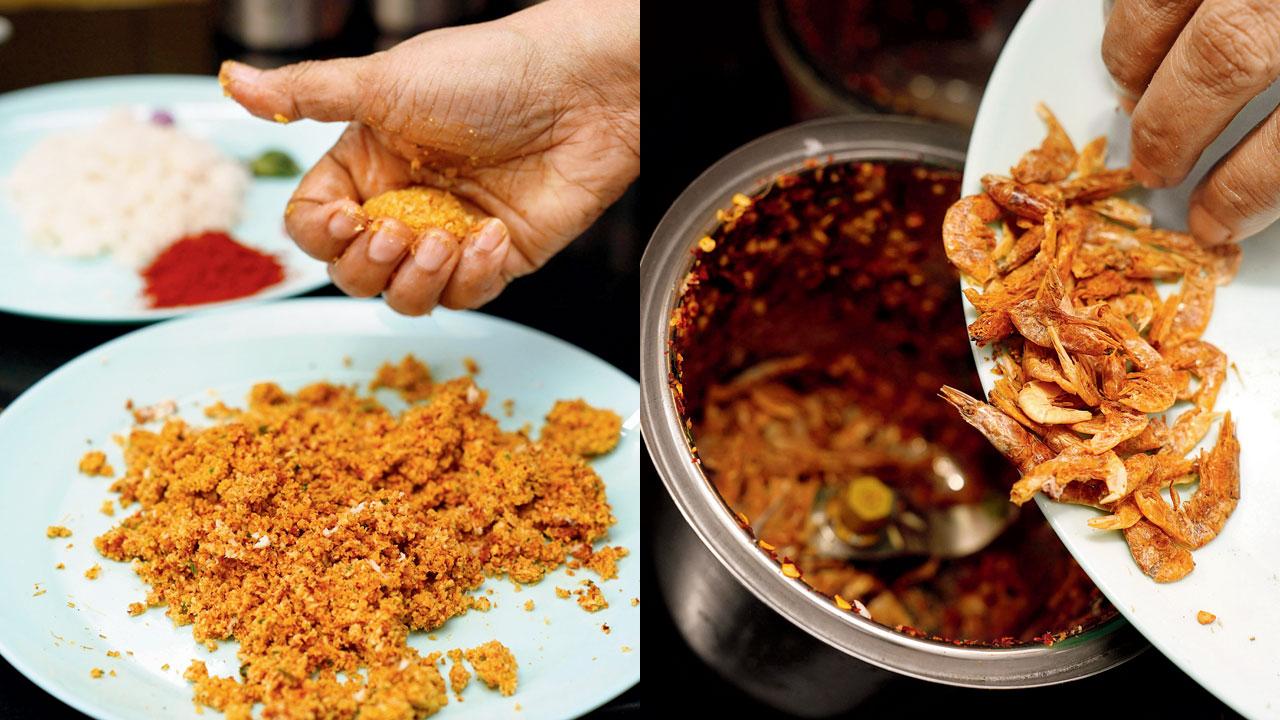
Bengaluru-based professor, podcaster and author Ranjini Rao tells us that besides the coconut chutney, families in South India make chutneys out of vegetables and their peels as well. Rao, who is also a home chef specialising in South Indian cuisine explains how the chutneys that we get from takeaway joints [even in, say, Chennai] do not resemble the world of homemade ones. “Most are watered down and not thick like the ones made at home,” she says, adding, “Every community in the southern states have their version of the coconut chutney, made using local as well as seasonal ingredients and that’s what makes it truly unique.”
Kerala
Bandra-based chef Sara Jacob Nair tells us there is a “war going on between chutney and chammanthis”. The chammanthi is coarse, while chutney is the finely ground version. Since coconut is the base for both, it all depends on how long it is ground. “Chutneys in Kerala go beyond the three colour variants of white, green and red,” says the co-founder of NaironFire, a food delivery kitchen specialising in homestyle Kerala cuisine.
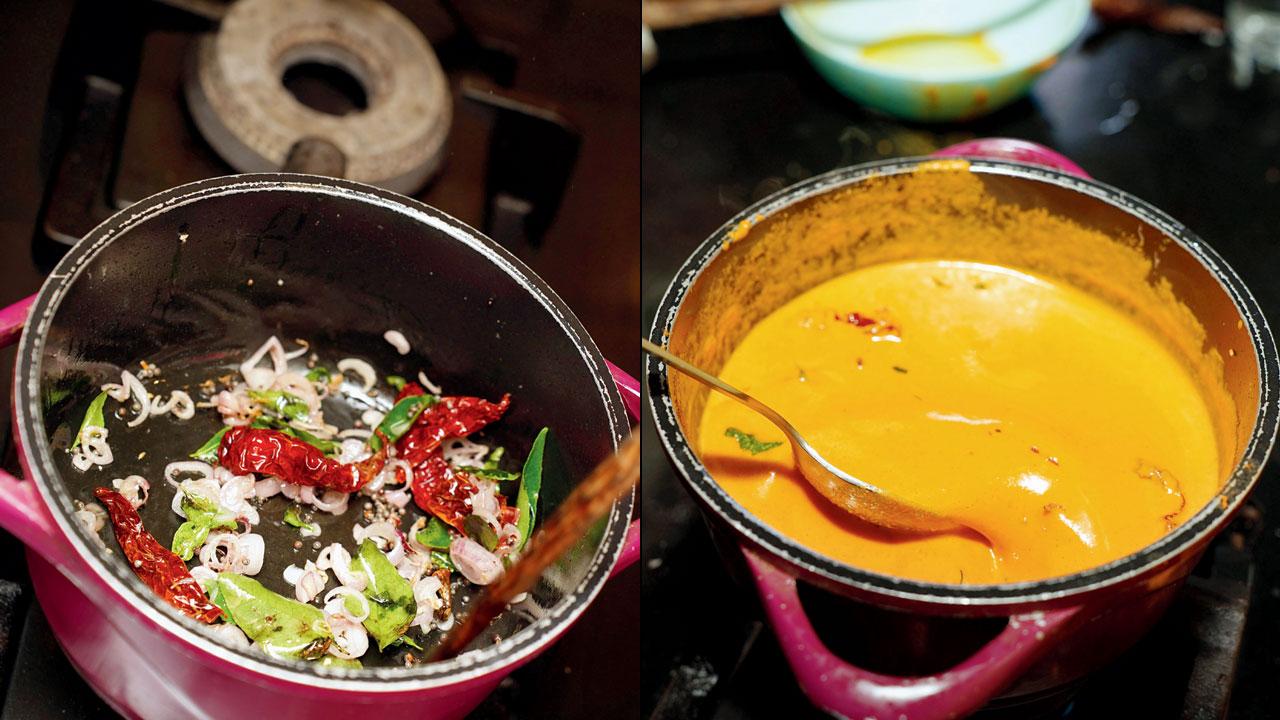
Thenga chammanthi (above) can be watery, like Sarah Jacob Nair prefers it, when there is no sambar. The thicker version can also be shaped into a ball and enjoyed with idlis
“We also have versions with tamarind.” Her favourite, to go with dry idlis is “the watery red chutney made with coconut, tomatoes and basic ingredients available in small local shops across Kerala.” The other popular variants include the tamarind chutney, which is sour and has red chillies; a no-coconut chutney called pulichammanthi and then there is chammanthi podi. These are not necessarily to be had with idlis, says Nair. “We usually eat these with rice,” she says.
Kerala also makes seasonal fruit chutneys using mango, pineapple or even passion fruit. “The state’s pineapples are one of the tastiest in the world and this pineapple chammanthi has a spicy-sweet profile with a lot of green chillies. We also add coconut to it,” she says, adding, “Keralaites use a special green chilli called kanthari, also called bird’s eye chilli. I grow these in my Mumbai home kitchen garden.”
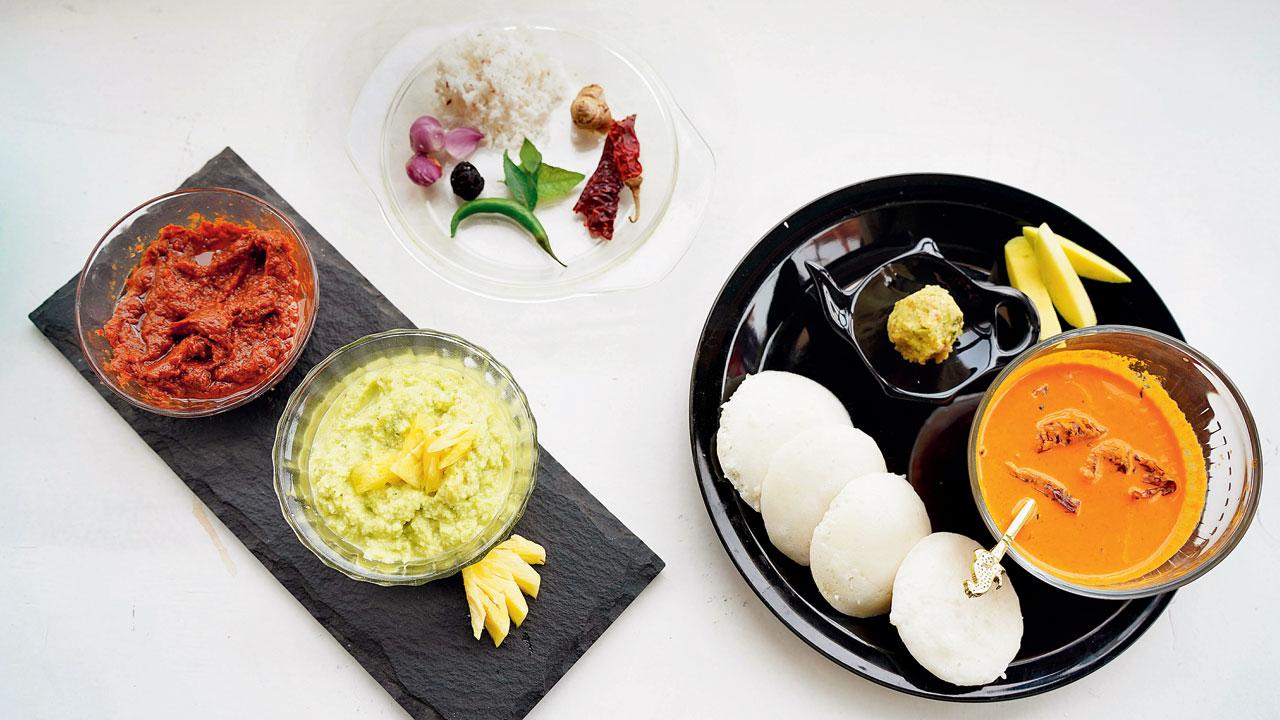
Keralities use pineapple, mangoes and passion fruit in chutneys and chammanthis. Seen here are pineapple chammanthi, mango chutney and puli chammanthi
Travel deeper into the state, and non-vegetarian, particularly seafood variants, can be found. Nair’s favourite prawn chutney has dried prawns, and roasted and ground coconut with red chilli and masala. “You eat it with hot rice. River fish is also used in abundance,” she says. When asked for a vegetarian option as a favourite chutney, Nair picks a good-inju-puli, made with ginger, tamarind and jaggery. “For breakfast,” she smiles, “we pour a spicy, watery red chutney over the idli like a curry. Once the idli soaks it all up, you can mash it with your hands and have it. You don’t even need sambar.”
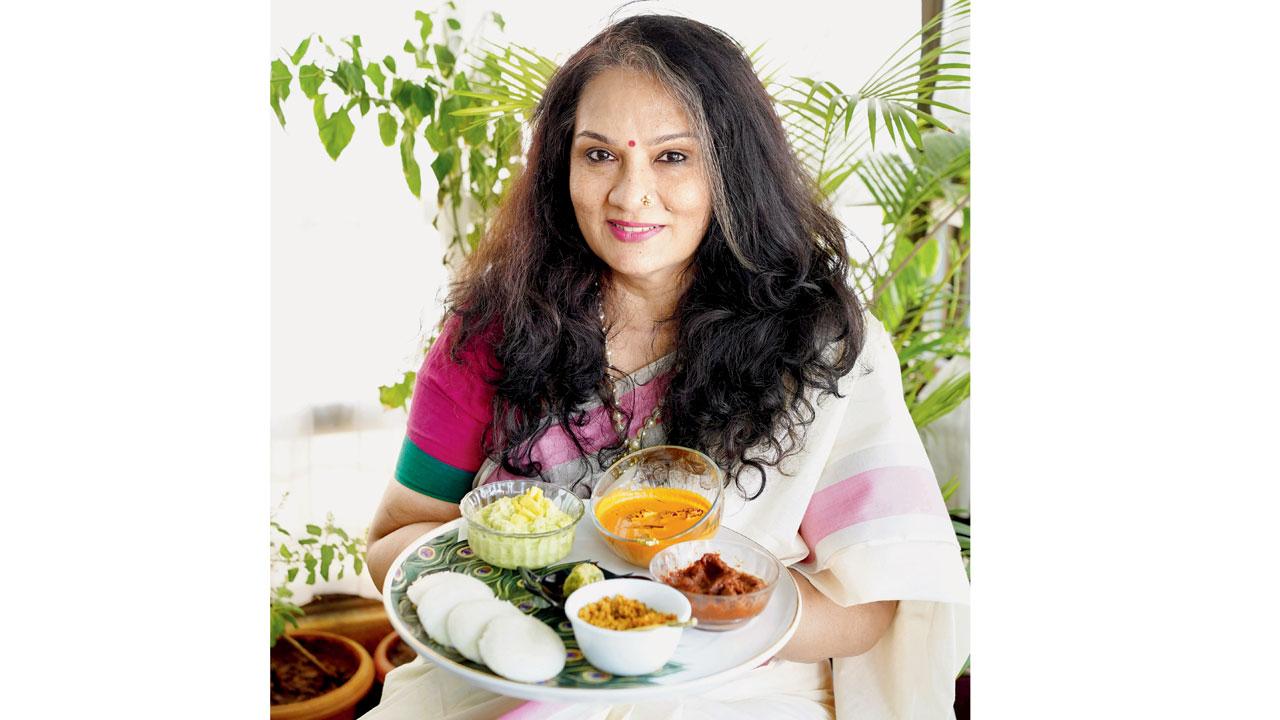
Sara Jacob Nair
Karnataka
“In Karnataka, coconut is not the star ingredient,” says Rao. “Our chutneys come with a twist of coriander or curry leaves that give it a light green hue. In fact, we use ridge gourd [turai] and its peels for that perfect shade.” In her book, Lessons From My Mother’s Kitchen, she recalls how her mum Lalitha Rao always served ridge gourd chutney with puris. “When I think of chutney,” says the author, “I always think of hot rice and ghee with chutney on top; you keep mixing [it together] as you eat. Chutney can be made with pantry ingredients, but remember that it always has to be thick enough to be scooped rather than an accompaniment to be dunked into.”
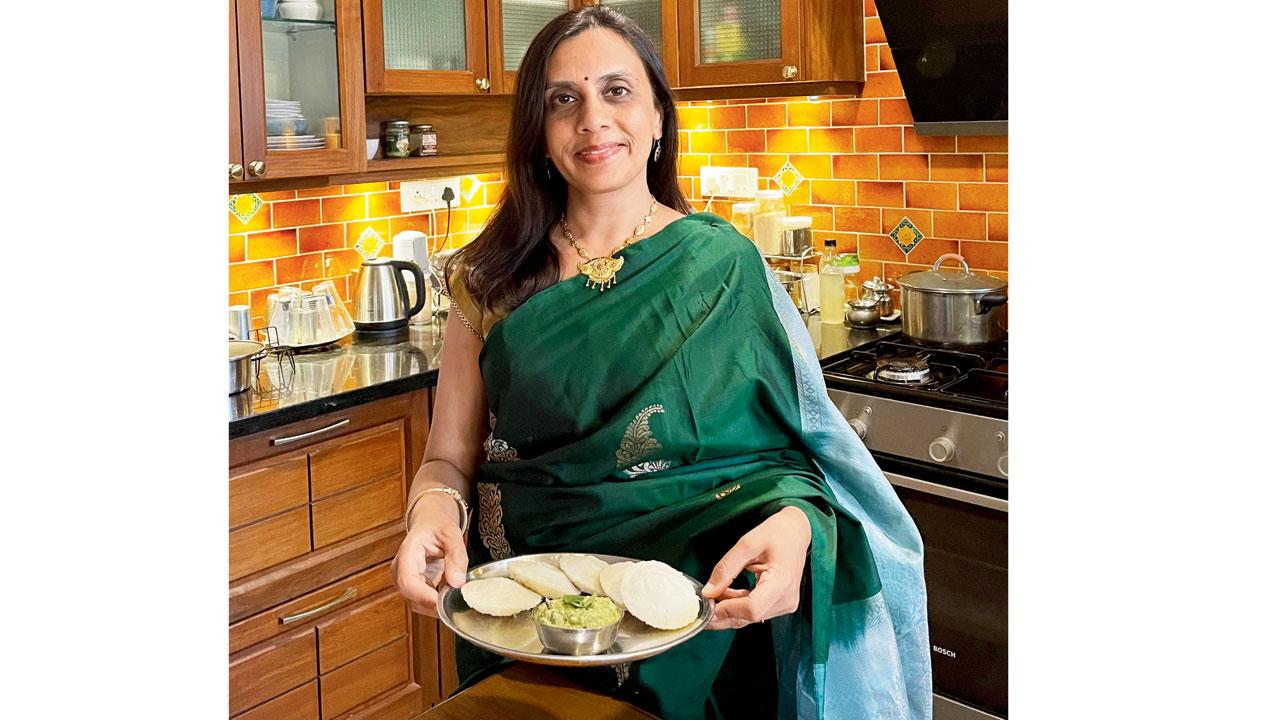
Ranjini Rao
In Kerala, Rao informs us that curd is used as a souring agent, but in Karnataka, tamarind replaces it. “In summer, tamarind takes a back seat because raw mango is the preferred choice for the souring agent,” she adds, voting for mango chutney as one of her favourites. “Another one is my mother’s lemon chutney; in winter, we use sesame oil to make it to keep us warm,” she adds. Rao’s recipes have been handed down generations and she believes that the best way to make chutney to hand-grind them using a stone mortar-pestle.
“Even today there are many hole-in-the-wall restaurants in Bengaluru that hand grind their chutneys daily,” she says. She admits that while she doesn’t hand grind her chutneys anymore, she hopes that one day she has the facility to do so.
Ridge gourd chutney (Peertangai chutney)
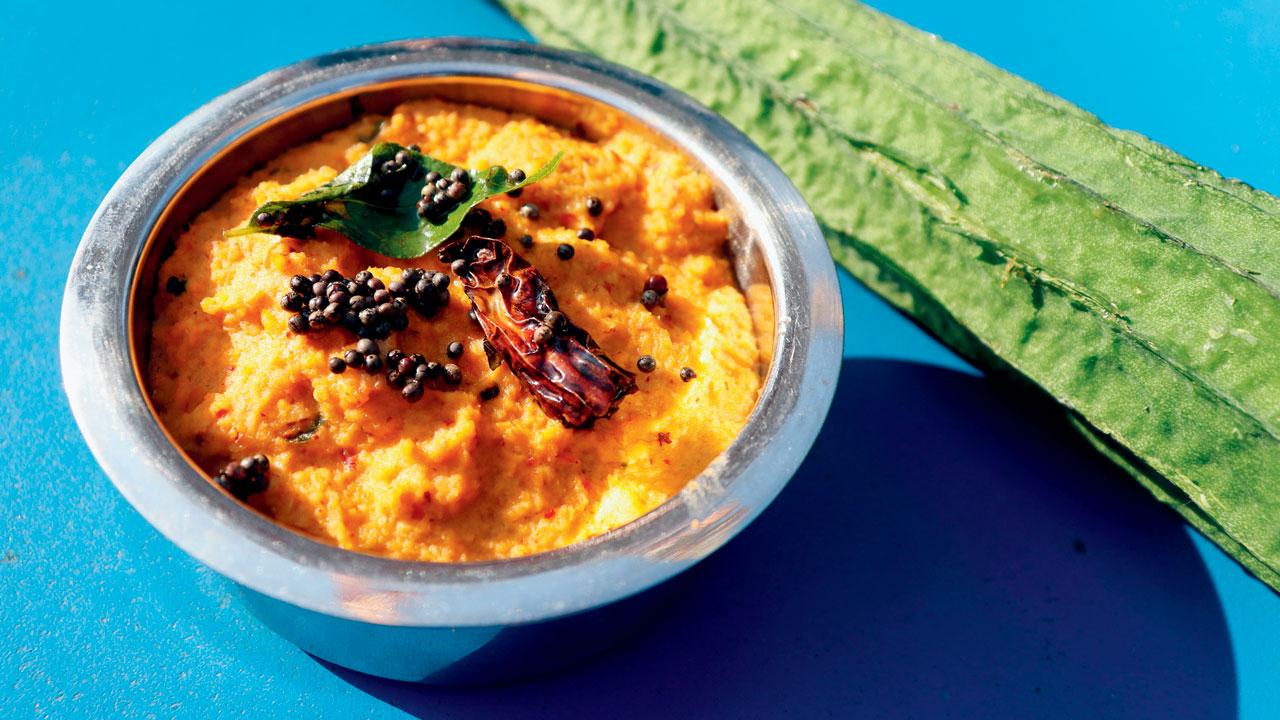
Ingredients
2 ridge gourds, peeled and chopped
5-6 red chillies
1 tbsp toor dal
A few curry leaves
1 coconut
Salt to taste
2 tbsp sesame oil
Method
Heat sesame oil, add all the above ingredients, except coconut, and sauté till the gourd shrinks and toor dal is golden brown. Grind in mixer with freshly-grated coconut. Temper mustard seeds, curry leaves and one broken red chilli, pour on paste and serve.
Carrot leaf chutney (Kodai farmer’s recipe)
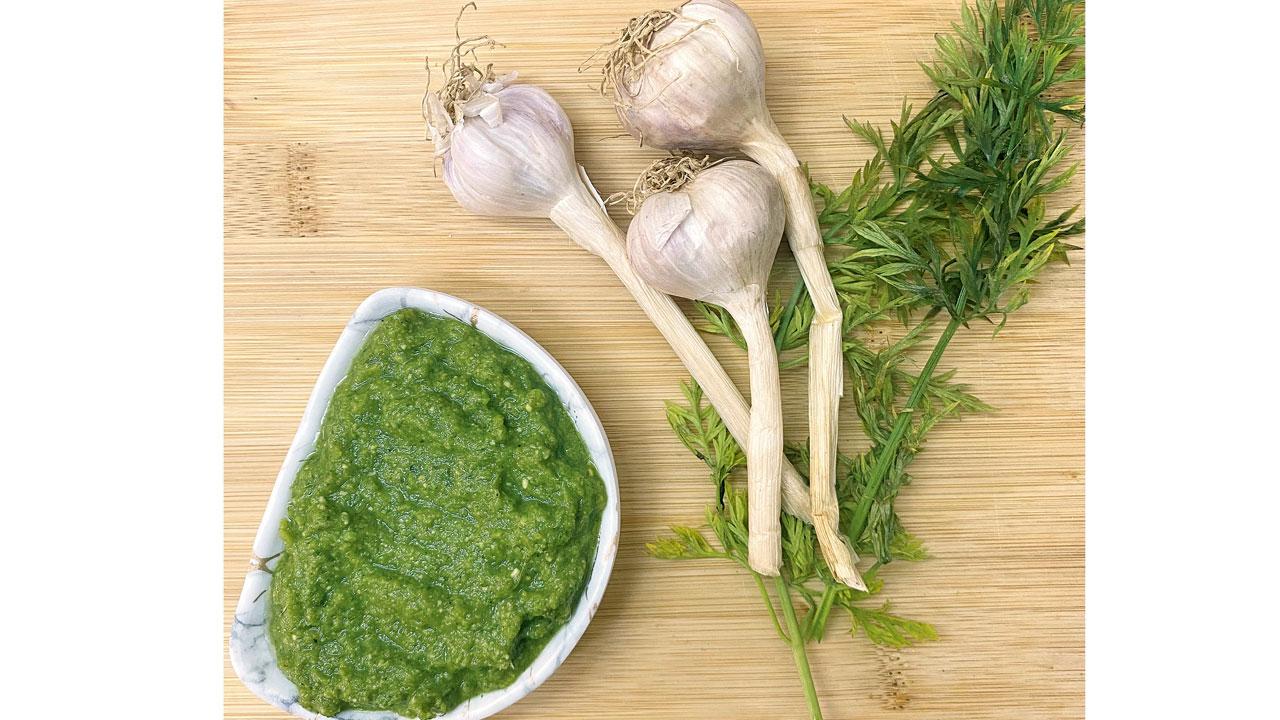
Ingredients
1 small bunch of carrot leaves
1 small bunch of coriander
5 cloves of garlic
1 inch of ginger
A few green chillies
1/2 tsp black salt
Salt to taste
Dash of lemon
Method
Grind all into a paste and enjoy with idli or over bread. Extremely healthy and delicious.
Curry leaves chutney pudi (Karibevu chutney Pudi)
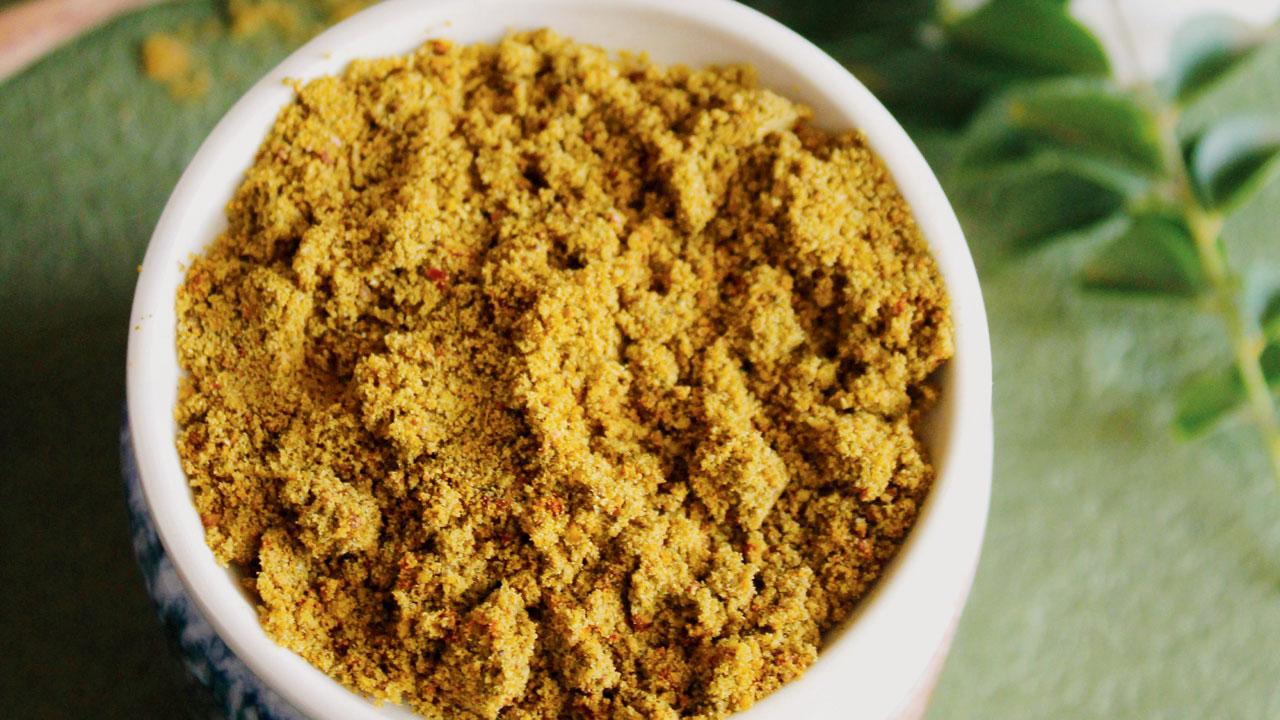
Ingredients
2 tbsp chana dal
2 tbsp urad dal
1 tbsp moong dal
1 tbsp toor dal
2 red chillies
1/4 tsp methi
1 tsp coriander seeds
1 tsp black pepper
1/2 cup peanuts
1 cup curry leaves
1/2 tsp tamarind powder
Pinch of asafoetida
1/2 tsp salt
1 tsp jaggery powder
Method
In a pan, dry roast the dals until they turn light brown, and set aside. Then, roast red chillies, methi, coriander seeds and pepper. Fry peanuts until brown and set aside—remove the skin when cooled. Roast the curry leaves until they turn crisp. Once cool, grind all the roasted ingredients with the tamarind powder, hing, salt and jaggery. Let it cool completely before storing it in an airtight container. This powder can be stored for up to four weeks.
Tamil Nadu
Andheri-based Sarada Krishnan Narayan, who started her entrepreneurial journey Mumbai as a home chef now a food truck specialising in South Indian cuisine. The 31-year-old chef hails from Coimbatore on the border of Tamil Nadu and Kerala, so her diet includes a mix of flavours from both sides. Narayan tells us that chutneys in Tamil Nadu are very spicy and the white one is made with green chillies here, while in Kerala, they use red chillies. Vegetables such as snake gourd, brinjal and tomatoes and other gourds are also used to make chutneys.
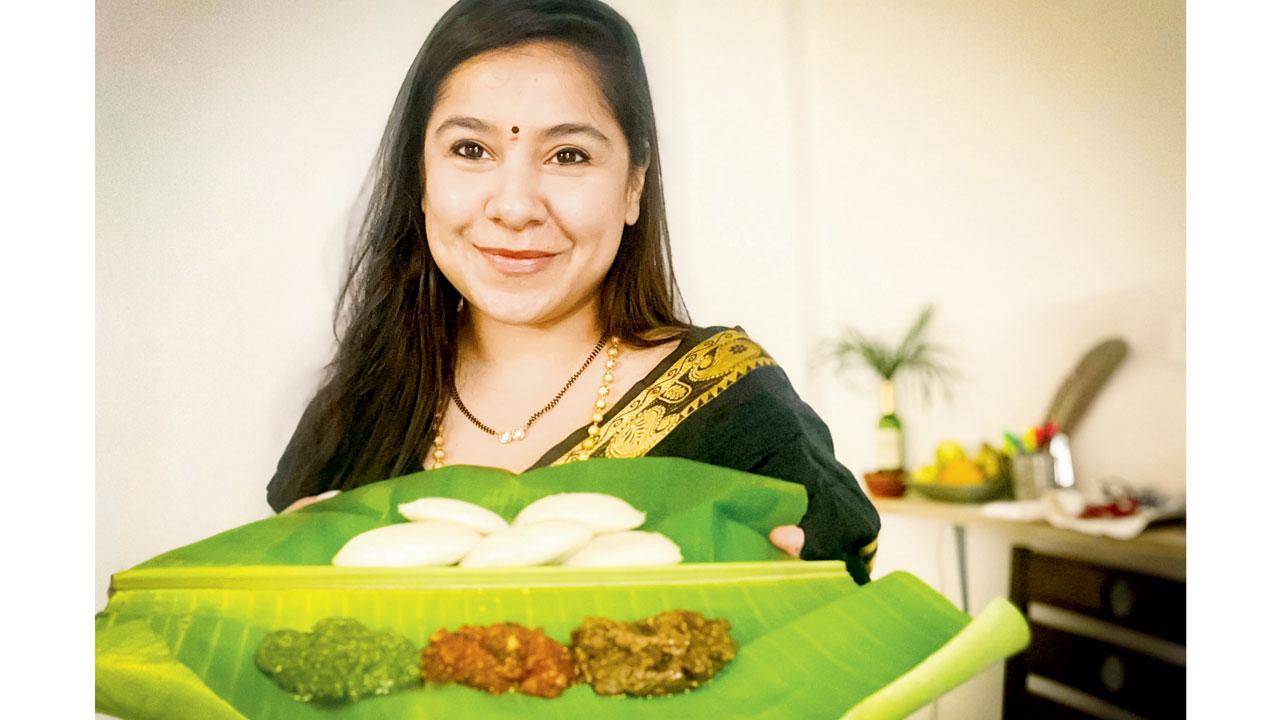
Tiruchirapalli-based Anastasia Dedhia’s exposure to indigenous chutneys goes back to her childhood home in Coimbatore. They had local Tamilians as cooks
“Local eateries here give four different types of chutneys,” she says. “One is a thick white chutney, another is a runny white one, a tomato and brinjal gojju and the red chutney, which can be made in many different ways,” she adds. Clinical psychologist and culinarian Anastasia Dedhia has been visiting Coimbatore since she was a child because of her father’s business. She was surrounded by cooks and domestic help who were locals. Formerly based in Mumbai, she has now moved to Tiruchirapalli in Tamil Nadu and as a culinarian, her avid interest in food and the time spent in Tamil Nadu has given her good exposure to indigenous chutneys.
Drawing comparisons, she tells us of how the red chutney that we are served in Mumbai is not authentic. The original version uses shallots, ground with other ingredients into a puree. “The tadka is that of curry leaves and mustard and sugar and salt is added to the mixture until the water from the tomatoes evaporates and the onions caramelise to give it a dark red tangy flavour,” Dedhia explains.
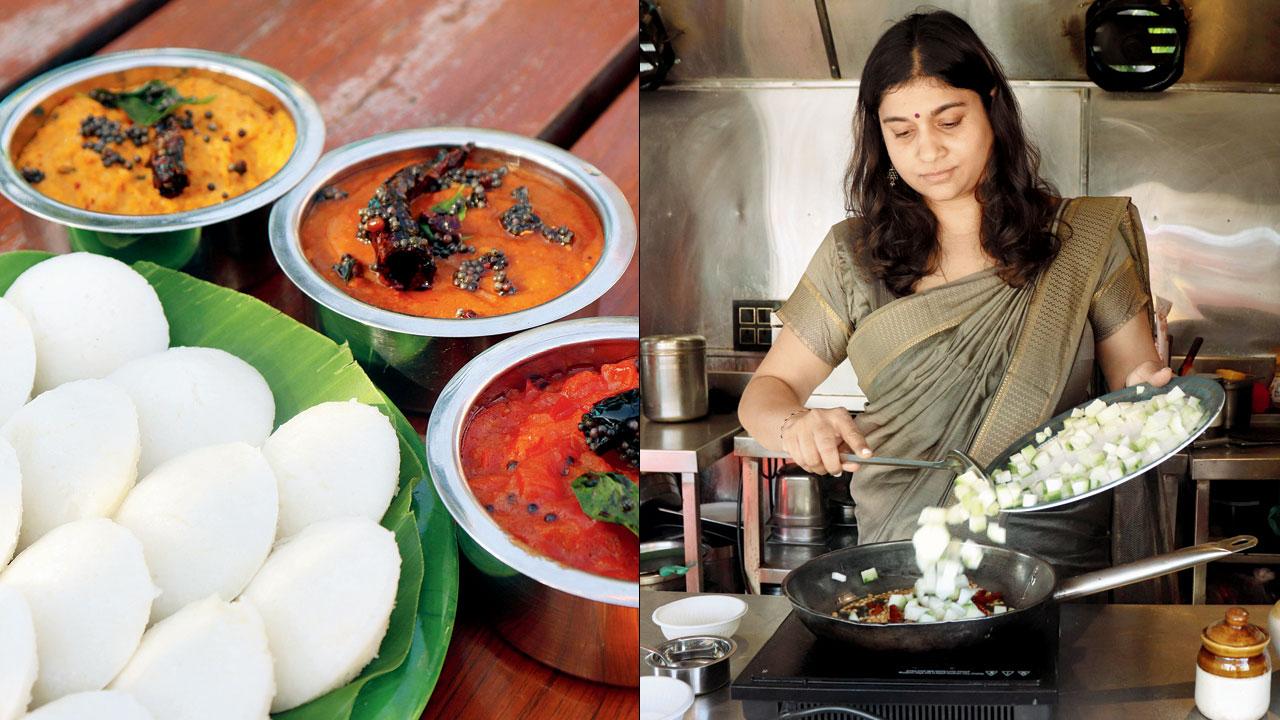 Tamil Nadu restaurants serve four different types of chutney. In the picture to the left sit yellow ridge gourd chutney, orange onion chutney and red tomato thokku. Pics/Anurag Ahire
Tamil Nadu restaurants serve four different types of chutney. In the picture to the left sit yellow ridge gourd chutney, orange onion chutney and red tomato thokku. Pics/Anurag Ahire
Narayan also says that red chutney is also made in the form of thokku (similar to a pickle) where they add more oil and can store it for almost a month. That is why it was known to be “train journey food”. Another thing she adds is while Kerala prefers coconut oil, in Tamil Nadu, sesame oil is preferred. “Even the dry coconut gunpowder chutneys have variations. Dal gunpowder is famous in Tamil Nadu and is made in different varieties by dry roasting curry leaves, coconut or garlic under the sun. Fresh batches are made often and we mix it with curd and feed it to children too,” she adds.
Dedhia’s travels to other parts of Tamil Nadu like Ooty and Kodaikanal, where she was introduced to a carrot leaf chutney. “It’s made exactly like green coriander chutney but coriander is replaced with carrot leaves which are grown in abundance there. Chutneys from the state use locally found ingredients including shallots, black pepper-corn and curry leaves.”
 Subscribe today by clicking the link and stay updated with the latest news!" Click here!
Subscribe today by clicking the link and stay updated with the latest news!" Click here!








